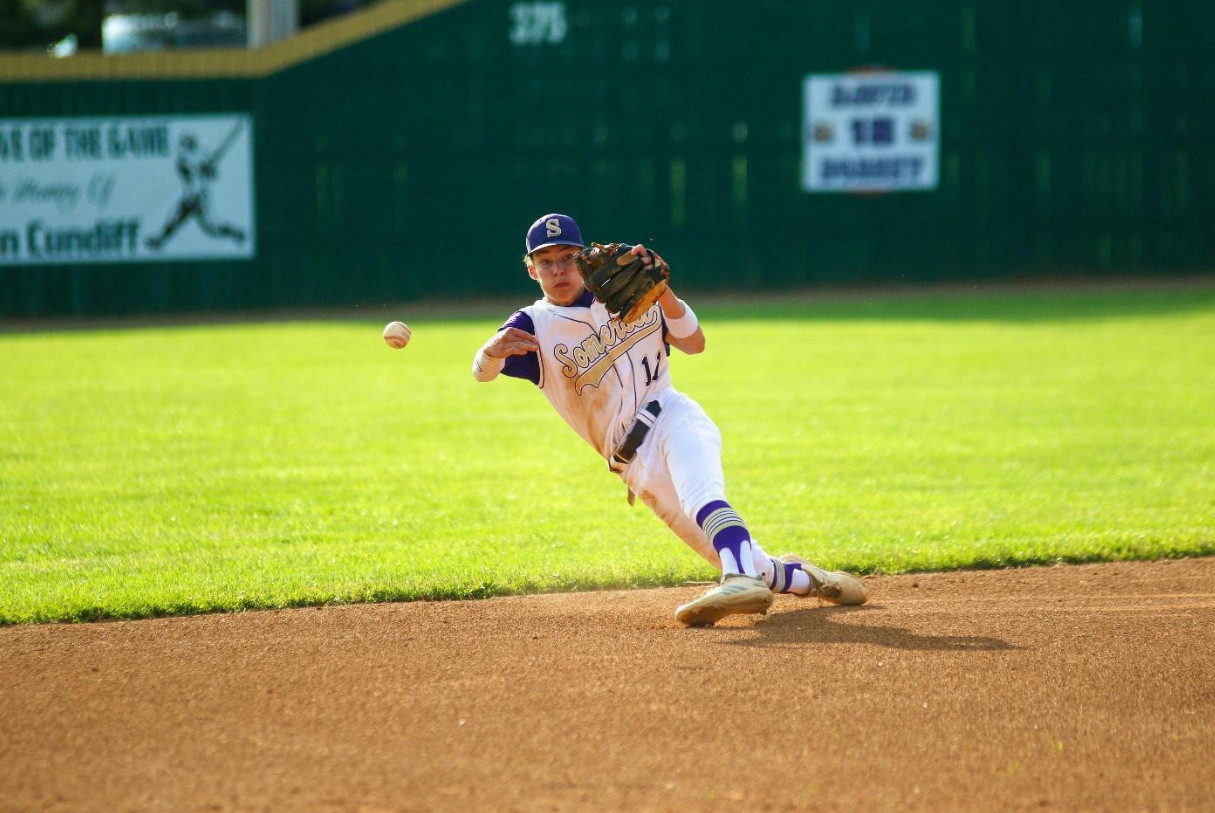What Are the Hardest Sports to Master? Analyzing Physical and Mental Challenges
Contents
- What Are the Hardest Sports to Master? Analyzing Physical and Mental Challenges
- Physically Difficult Sports
- Standards for Assessing Sports-Related Physical Difficulties
- Vital Factors That Determine The Physical Difficulty Of a Sport
- Top 5 Sports That Are Physically Demanding
- # 1 Boxing
- # 2 Water Polo
- # 3 Gymnastics
- # 4 Rugby
- # 5 Ice Hockey
- Most Mentally Hard Sports
- The 5 Most Difficult Sports, Mentally
- # 1 Swimming
- # 2 Gymnastics
- # 3 Tennis
- # 4 Golf
- # 5 Baseball
- Pros and Cons of Competitiveness in Sports
- Blend Mental and Physical Training
- Frequently Asked Questions
Recomended bookmakers
KEY TAKEAWAYS:
- Individual variances in physical and mental characteristics explain why some athletes perform better than others while having the same amount of practice.
- When assessing sports based on physical difficulty, important characteristics, including mental toughness, muscular strength, cardiovascular endurance, and reaction time, are examined.
- The majority of the most mentally hard sports are individual sports because, when playing individual sports, you can’t rely on anyone else.

Photo: A man playing baseball (source: https://www.pexels.com/photo/photo-of-man-playing-baseball-2446564/)
Even if practice makes it perfect, individual variances in physical, mental, and even emotional characteristics explain why some athletes perform better than others while having the same amount of practice.
Even with comparable amounts of practice, there are many reasons why people perform differently in sports:
- Genetics: Athletic performance can be significantly impacted by genetic predispositions. Various factors, including body structure, lung capacity, and muscle fiber composition, can influence a person’s ability to play well.
- Physical components: Performance is influenced by height, weight, strength, speed, and agility. Certain physical attributes may be favored in some sports, making it simpler for people with those attributes to succeed.
- Coordination and motor skills: People differ in their natural hand-eye coordination and motor abilities. Some people may be naturally better at complex movements.
- Cognitive aspects: In many sports, the ability to read the game, make decisions, and make quick reactions is essential. How well someone anticipates plays and responds under duress might be influenced by their cognitive talents.
- Mental rigidity: Performance can be significantly impacted by psychological elements such as resilience, attention, and confidence. Those who suffer from anxiety or self-doubt may not perform as well as athletes with good mental stability.
- Quality of coaching and training: The training environment and coaching efficacy can differ greatly. Gaining access to improved facilities, coaching, and resources can improve skill development.
- Drive and attitude: An athlete’s participation and effort can be influenced by their motivation and practice mindset. People who are more dedicated and passionate might advance more quickly.
- Genealogy of injuries: An athlete’s performance and capacity for efficient practice can be impacted by prior injuries. Training and development may be restricted by chronic injuries.
- Quality of practice: Every single practice is created equal. The focus during practice, feedback obtained, and the sort of practice (e.g., intentional versus mindless repetition) can all affect how well a skill is acquired.
- Exposure and experience: Learning new abilities might be made easier by having prior expertise in relevant sports or activities.
Physically Difficult Sports
The physical needs of various sports vary greatly in the realm of sports. While some prioritize endurance, agility, or flexibility, others call for explosive power. Knowing these distinctions makes it easier to appreciate how much commitment and preparation are needed to compete at the highest levels. Athletes push their bodies to extreme limitations, enduring exhausting exercises, injuries, and healing processes, all in pursuit of maximum performance. The aptitude to assess what’s the most challenging sport physically is dependent on multiple variables, such as the intensity of training, the likelihood of injury, and the physical strain on the body as a whole
When assessing sports based on physical difficulty, important characteristics, including mental toughness, muscular strength, cardiovascular endurance, and reaction time, are examined. Some sports test an athlete’s capacity to sustain maximum power for prolonged periods, while others need constant, high-intensity action. For instance, team sports like rugby and water polo demand a blend of strength, speed, and strategy, whereas combat sports test both endurance and strength. It’s hard to choose one sport as the most physically demanding because each one has its own set of difficulties.
Standards for Assessing Sports-Related Physical Difficulties
Finding the physically most difficult sport necessitates a methodical process based on objective standards. While every sport presents a unique set of challenges, some require extraordinary mental toughness, explosive strength, or endurance. Numerous elements that affect an athlete’s overall performance must be taken into account to determine a sport’s physical difficulty.
Different physical characteristics are valued in each sport, and the sum of these factors determines how physically taxing a given discipline is and answers the question of what are the hardest sports in terms of physicality.
Vital Factors That Determine The Physical Difficulty Of a Sport
- Endurance: The capacity to endure vigorous performance for an extended period. Sports like marathon running, football, and cycling call for outstanding cardiovascular fitness.
- Strength: Raw muscular power is crucial in sports such as wrestling, weightlifting, and American football. Athletes in these disciplines train to produce ultimate force.
- Agility: The skill to change direction swiftly while keeping balance and control. This is essential in sports like tennis, basketball, and ice hockey.
- Flexibility: Gymnastics, figure skating, and martial arts are among the sports that require a high amount of flexibility to compete at the highest level.
- Coordination: Sports like gymnastics, baseball, and combat sports require precise movements, which require high-level motor control.
Every one of these elements is essential to an athlete’s capacity to perform at the greatest level. Nonetheless, the most physically taxing sports are usually those that call for a number of different skills. We may start evaluating which sport is the most physically demanding by taking these factors into account. An athlete’s total challenge is determined by their endurance, strength, agility, and coordination; certain sports are much more difficult than others. Based on these crucial characteristics, we’ll examine particular sports that rank among the most physically taxing in the upcoming sections.
Top 5 Sports That Are Physically Demanding
Athletes have pushed the limits of human power, endurance, and ability in a variety of disciplines throughout history. While certain sports prioritize explosive power, agility, and resilience, others demand unwavering endurance. It’s clear that some sports stand out because of their high physical demands and the toll they take on the human body, while determining which activity is the hardest physically.
What are the hardest sports to master, physically speaking, you still wonder?
This is our choice:
# 1 Boxing
Because it combines strength, endurance, agility, and mental toughness, boxing is regarded as one of the hardest sports, if not THE hardest.
Fighters go through rigorous training programs that include conditioning exercises, strength training, and sparring. Peak physical fitness is necessary to maintain high-intensity movement while evading and delivering forceful strikes. Boxers also have a greater risk of injury due to the frequent hits they receive to the head and body. The sport is made even more challenging by the mental toughness needed to maintain concentration in a high-stress combat situation.
# 2 Water Polo
Water polo is also one of the most difficult sports.
In order to preserve balance and coordination, participants in this aquatic team sport must swim continuously, sprint quickly, and engage in physical combat with rivals. Throughout the game, participants must rely on their upper body strength and core stability due to the absence of firm ground support. Players expend a lot of calories during 32-minute matches; therefore, cardiovascular fitness and endurance are essential.
# 3 Gymnastics
Despite not being a contact sport, gymnastics requires participants to have a great deal of strength, flexibility, and accuracy.
Landings, vaults, and flips all require a great deal of body control. In order to perform routines with nearly flawless form, gymnasts also need to build a strong core and explosive strength. Even fundamental techniques take years to learn, and because the sport is so high-impact, injuries, including ligament rips and fractures, are frequent.
# 4 Rugby
Another physically demanding activity that requires both strength and stamina is rugby.
Players frequently engage in high-impact collisions due to the full-contact nature of the game, necessitating extraordinary strength and durability. Rugby players are more likely to get an injury because they have less protective gear than American football players, who wear helmets and pads. Because players must sprint, tackle, and pass while sustaining optimal performance throughout the game, the sport also demands constant movement.
# 5 Ice Hockey
Ice hockey is frequently regarded as one of the most difficult sports in the world for a variety of reasons. The game’s ruggedness and pace are two of the most important. It’s challenging to keep possession of the puck and manage the ice when players are skating quickly and moving about a lot. They also need to be ready for physical altercations with opponents, which can cause severe injuries.
Another element that renders hockey one of the most difficult sports is the extent of skill and precision needed. Players must be adept at controlling the puck with great dexterity and make quick, precise passes to teammates. They must likewise be able to shoot with power and accuracy and have the ability to foresee the movements of opponents in order to defend against them.
Most Mentally Hard Sports
The number of settings or times when negative mental demons can arise and infiltrate the mind is the most important consideration when making this assessment. The team sport that comes in at number five may surprise you, even though it’s clear that the majority of the top 5 are most likely individual sports.
So, why do individual sports have such a mental component?
When playing individual sports, you can’t rely on anyone else. No one else is at fault. The person performing the work bears full responsibility for the outcome. The person has done well if the day goes well. But if the day doesn’t go well, then the person hasn’t done well. All of this leads to an enormous amount of stress in addition to numerous other mental health issues, such as a rise in anxiety and pessimism and a decrease in self-esteem, to mention a few. A performance can be ruined by these important mental factors, to name a few.
Individual sports put a lot of pressure on athletes because they are solely in charge of their physical and mental performance. In addition, there are many more opportunities for negative mental demons to surface during performances. The majority of athletes experience anxiety, tension, or nervousness the night before a competition. The following morning and, at the very least, the beginning of the event are both marked by those nerves. Because individual sports can begin and pause many times throughout a period of time, it leaves the potential for negative mental demons to creep into the most vital moments. With all of this, there’s extra time for overthinking and overanalyzing.
Let’s answer the question: What are the hardest sports to play, in terms of mental component?
The 5 Most Difficult Sports, Mentally
There seem to be five sports that demand the most mental toughness, the most mentally demanding perseverance, and the most mental training in order to control one’s game and achieve peak performance.
# 1 Swimming
The majority of swimmers experience what’s known as the “seven-day self-sabotage cycle”. They are already doubting and worrying about their competition seven days before a meet. As you might understand, the nerves can grow larger and worsen every day.
The good news is that swimmers may interrupt this pattern and reduce their anxiety so they are prepared to provide their best effort on the day of the competition. However, in order to get here, they must use innovative and individualized routines to reduce anxiety the night before the meet, before the swim begins, and in between races. To improve and become more proficient, they also want a useful method for assessing each race and their overall performance.
# 2 Gymnastics
Swimmers and gymnasts are quite similar. Gymnasts work on very similar things in very comparable areas to swimmers because they are susceptible to the seven-day self-sabotage cycle too. But there’s more to the mental challenges of the gymnasts.
Fear and the abrupt and “mysterious” inability to do once-easy abilities are common and typical aspects of gymnastics for nearly all gymnasts. Learning new abilities, having a terrifying near-miss, falling, getting harmed, or witnessing a colleague get hurt can all cause fear. One of the most significant mental obstacles that gymnasts, their coaches, and their parents must deal with is fear.
# 3 Tennis
A week prior to a tournament, some tennis players experience anxiety and self-defeating behavior. Most tennis players find it difficult to pre-serve, reset, refocus, and let go of mistakes in between balls, as well as to do so before a match.
Additionally, tennis players can improve their control in these areas, which will boost their confidence and reduce worry and pessimism. Tennis players want time and space to assess their performance in order to improve, just like swimmers and gymnasts. Those guys and ladies are the ones you should bet on, metaphorically but also literally, on betting sites for tennis, if games of chance are your thing.
# 4 Golf
Tennis players and golfers manage their perceived stress in very similar ways, and they practice similar skills: pre-shot and pre-round routines, as well as performance evaluation. How golfers handle the idle time between holes and each ball, however, is a significant distinction where they suffer.
You don’t have time to think in the majority of other sports. You need to stop trying to control your reaction and respond more instinctively. Likewise, you quickly discover that thinking about your body while shooting impairs your shooting skills. There’s no time constraint or sense of urgency when playing golf. You have time to consider a variety of options and attempt to exercise self-control so that you don’t make a mistake.
# 5 Baseball
There’s a lot of downtime in baseball as well, as players wait to bat and for the next batter. Additionally, there’s too much pressure on pitchers who are waiting to take the mound, and they have too much time to reflect. This period of inactivity allows uncertainty to infiltrate and take control. Baseball has more downtime than other team sports, unless a participant is sitting on the bench.
Baseball players need mental toughness that combines the following: halting the seven-day self-defeating cycle; reducing anxiety (doubt) the night before and morning of the game; creating a pre-batting routine; practicing techniques to refocus and reset; letting go of mistakes in between plays; and finding constructive ways to assess their performance.
Pros and Cons of Competitiveness in Sports
| PROS | CONS |
| Increases the motivation of athletes | Enhances anxiety and stress |
| Improves cooperation and teamwork | Pressure to deliver outstanding results |
| Increases the effectiveness of strategic gameplay | Negative effects on mental health |
Blend Mental and Physical Training
Every sport, as is evident, has both mental and physical components. Mental toughness is essential for all sports. For their particular surroundings, each athlete requires mental training.
Although this is true, compared to most team sports, individual sports are typically “more mental”. In team sports, you have others to lean on when you’re feeling low, but in solo sports, that’s usually not the case. In addition to the fact that you only have yourself to rely on, most solo sports include a lot of stopping and beginning, which encourages overthinking and performance analysis. It’s possible to handle any bad mental demons and create an environment that’s conducive to success if one possesses the necessary mental talents.






